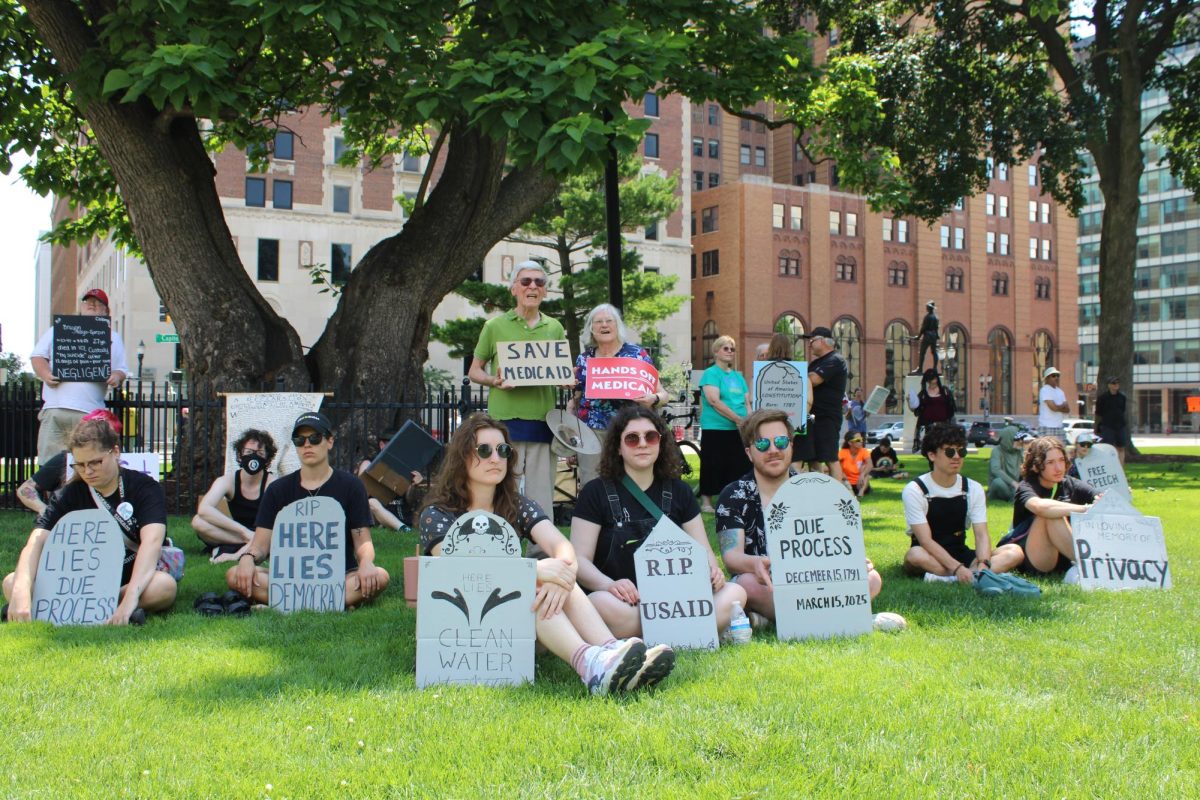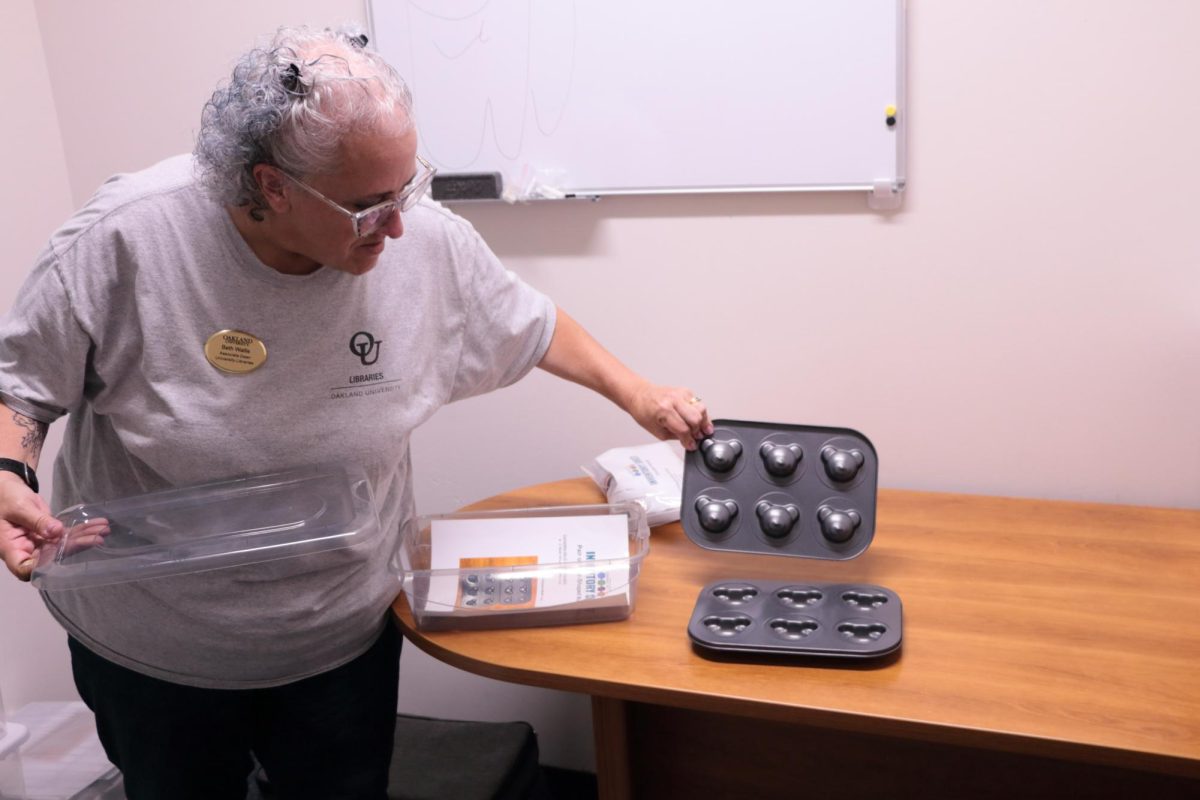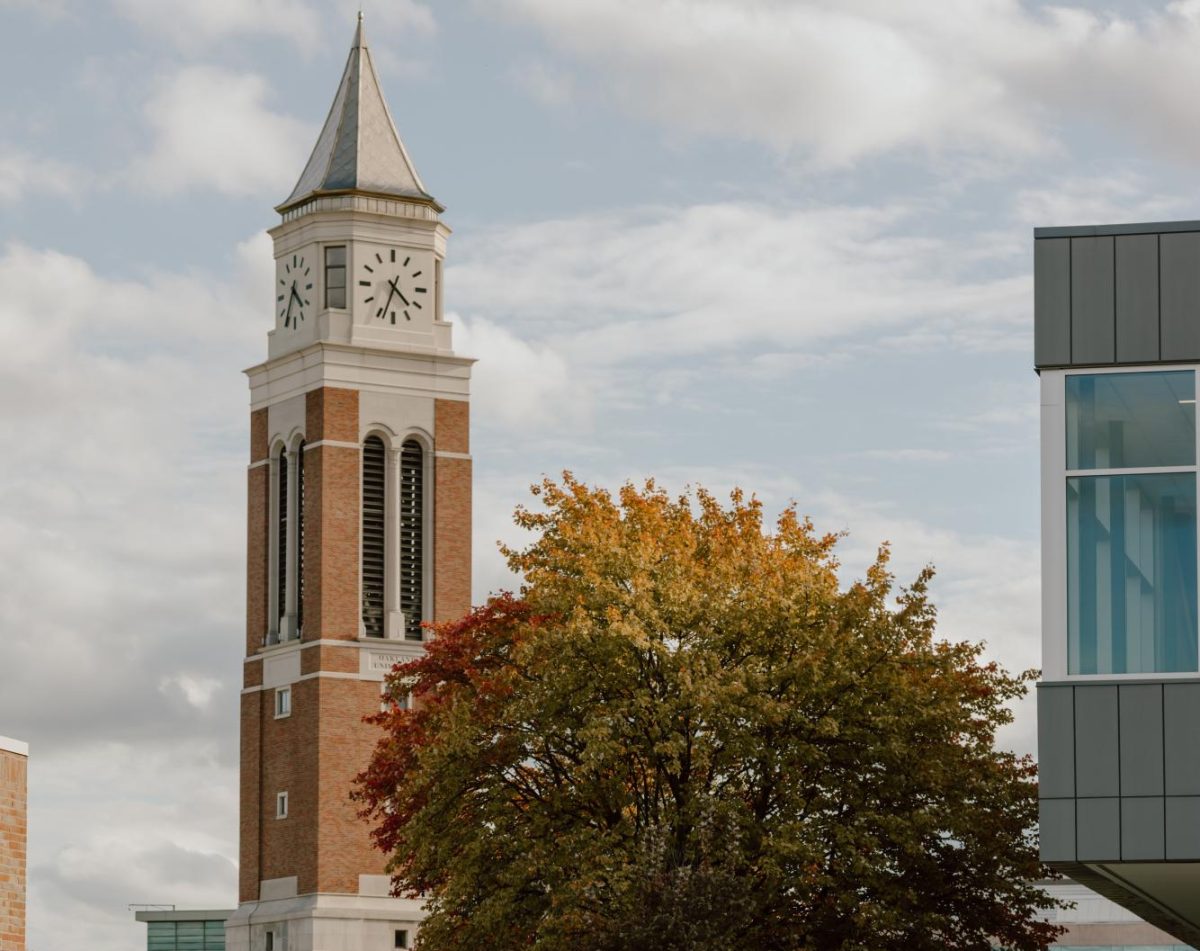With the first half of the year gone by, the U.S. witnessed 14,713 protests just in the first five months — 1,000 more protests than those that occurred in the same days of Trump’s previous administration. Participants at the “Funeral for Democracy” demonstration in Lansing explained why protests take place and their relevance in the present day.
For those present at the demonstration, protest is about visibility, community building and organizing for political and social change. While not all boots have to, or can, be on the ground, participants also highlighted civic involvement and mutual help initiatives as a way of pushing for change.
“Protest is one part of a triangle that holds up change, that causes change,” Ari Stewart, part of the 50501 Movement organization, said. “Protest, on its own, isn’t going to change anything, but it is protest, direct action and mutual aid. They are like the three legs of a table without one; the whole thing falls.”
The 50501 Movement is a decentralized initiative to organize and coordinate protests, rallies, demonstrations and mutual aid drives. Present and in collaboration with other grassroots activists, 50501 helped coordinate the Presidents Day, No Kings and Hands Off protests among others.
As part of the Michigan chapter of 50501 Movement, Stewart is part of the graphic design team. However, they are part of the organizing process before and during protests at Lansing.
“The purpose of protest, in that relationship with the others, is to bring people in and increase visibility. Protest gets people in the door. Protest makes people hear about it,” Stewart said. “Protest is not going to convince our overlords to benevolently change their minds and stop hurting people. No amount of protest is going to do that.”
In line with the mourning motifs of the “Funeral for Democracy” demonstration, feelings of solidarity, support and community building echoed amongst attendants.
“I also went to Pride this year… I found that being there and being surrounded by like-minded people who care about the same things that I do makes me feel like it’s not so bleak and hopeless,” Mari Ruiz, a college student at the protest, said. “It kind of feels like a lot of people have gotten misconstrued ideas of what protesting is and what it means to everyone who decides to attend one.”
For others, the act of congregating with their communities and reclaiming public spaces helps to assert or discuss their struggles and causes while drawing attention away from harmful rhetoric.
“Even if we’re not going out and actively doing something physically, the act of showing up and existing is resisting,” Erin, a community organizer who wished their name to remain anonymous, said. “They will try and do whatever they can to twist your messaging, and they’ll call you names or whatever. But as long as you show up and you exist and you speak your point, they cannot change the meaning of your words.”
Marshals, medics, legal observers and rapid response teams are other forms of supporting social movements, Stewart said. If not taking to the streets, involvement in government structure is a more hands-on option, as explained by Elyon Badger, a veteran running for Michigan House seventh district.
“This is the system we get to inherit, so we’ve got to work with it, what we can for now, because revolution is not overnight,” Badger said. “So if I’m gonna work hard to keep capitalism alive, I think capitalism can do a little favor back and make sure that we have shelter, food and medicine, and that way we can work happily and healthily.”
At the core of protests and political movements, mutual aid is the catalyst and result of direct actions, Stewart explained.
People do it for different reasons… but really you do it because when somebody needs help and you can help them, then you do, and it’s a good thing,” Stewart said. “You do it because it’s a good thing, because it makes the world better, it makes their life easier, and they’re a human person, and making their life easier is worth it on its own merits.”






